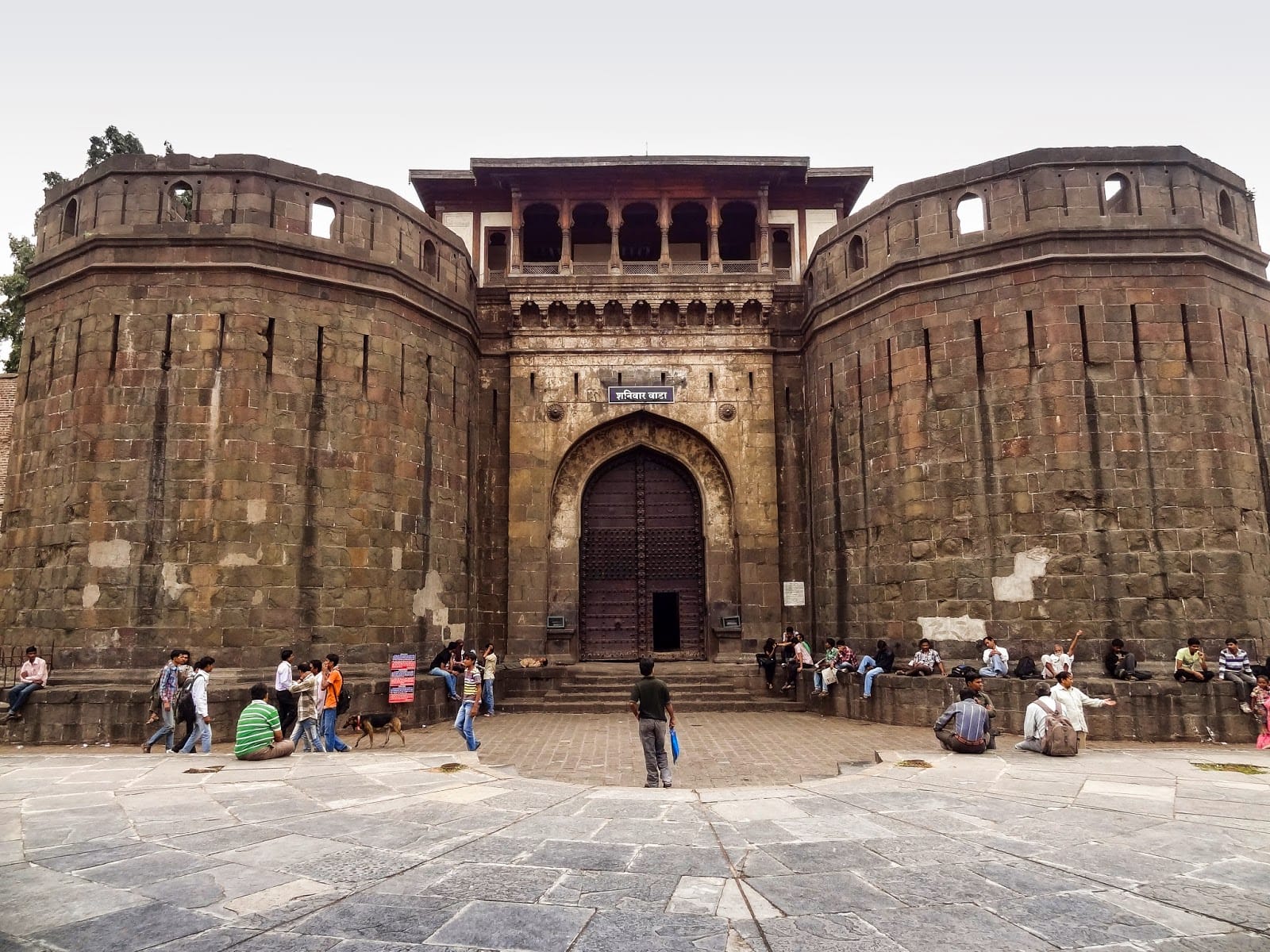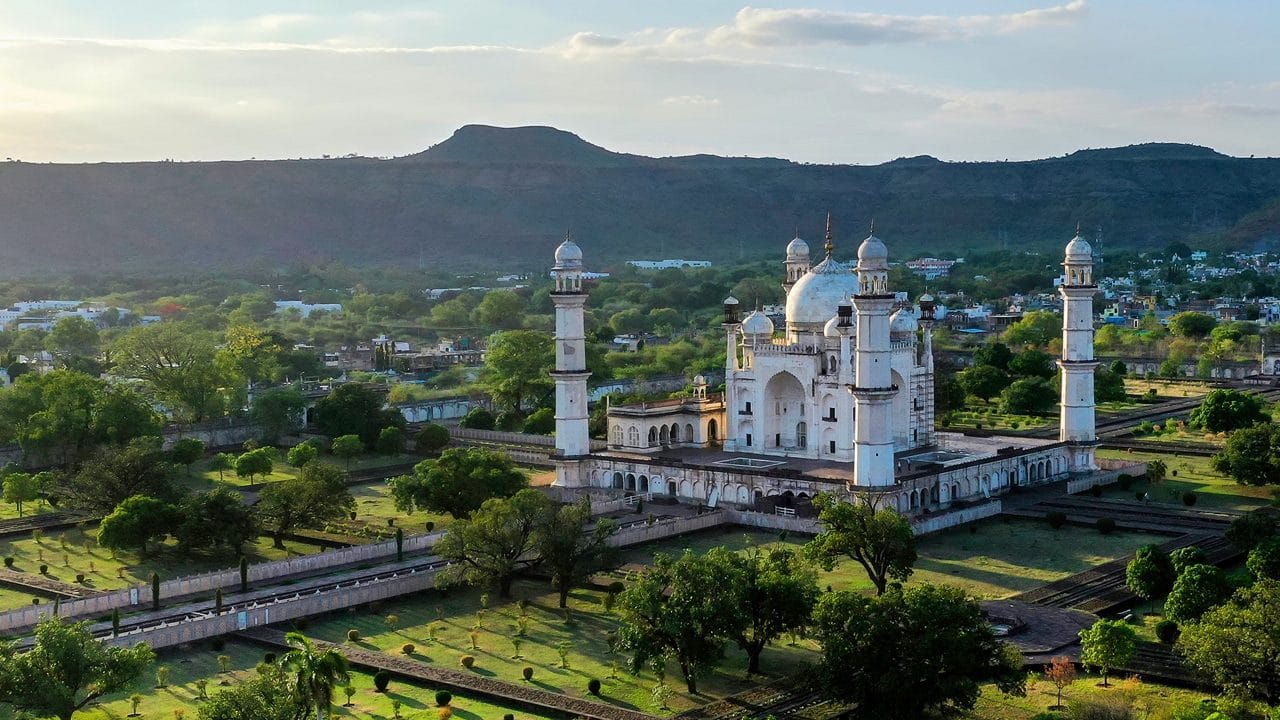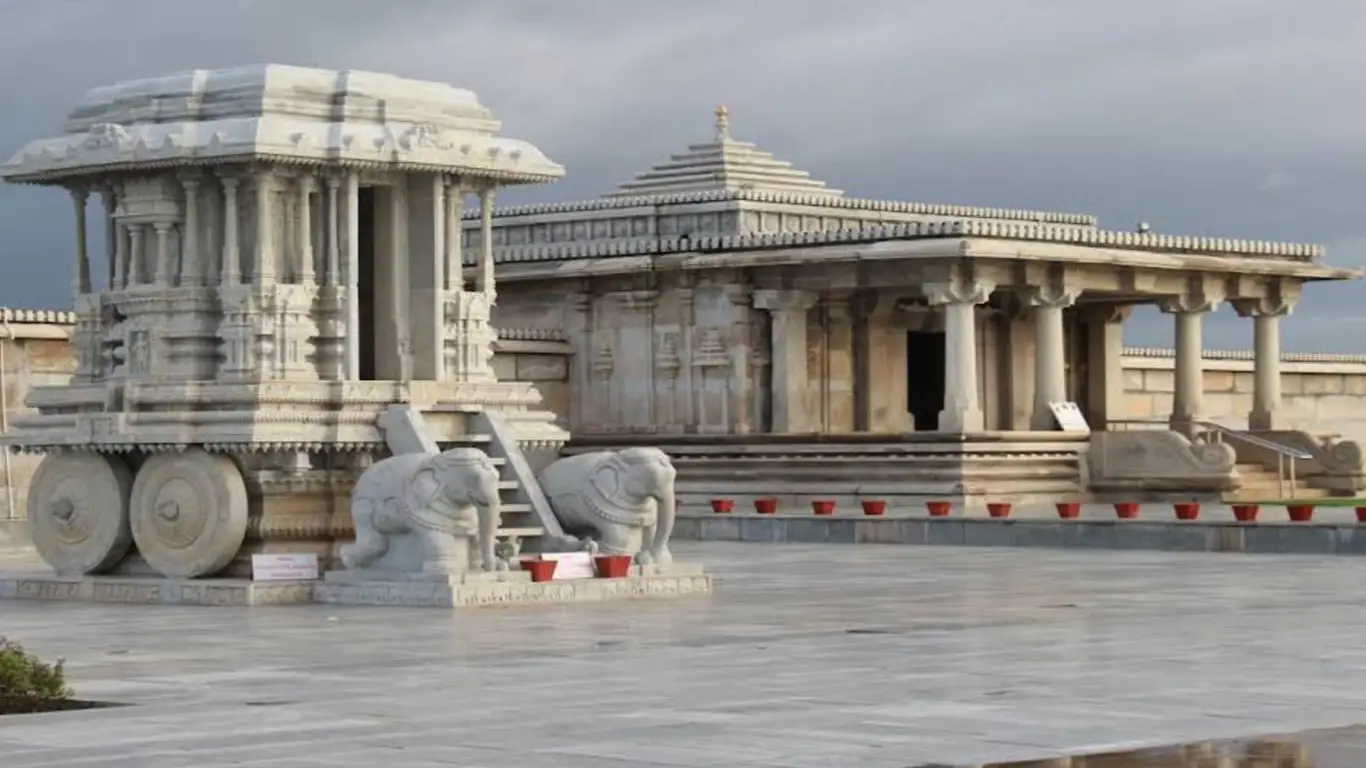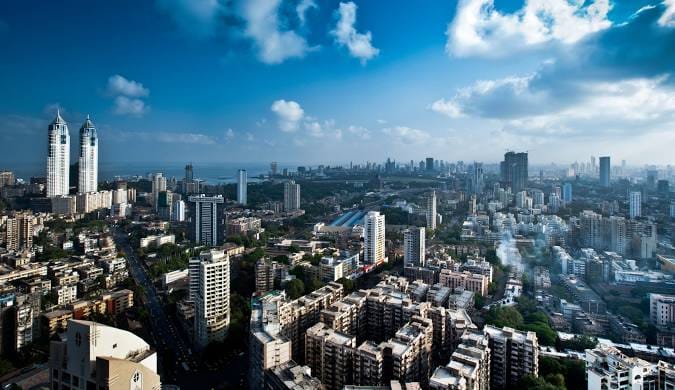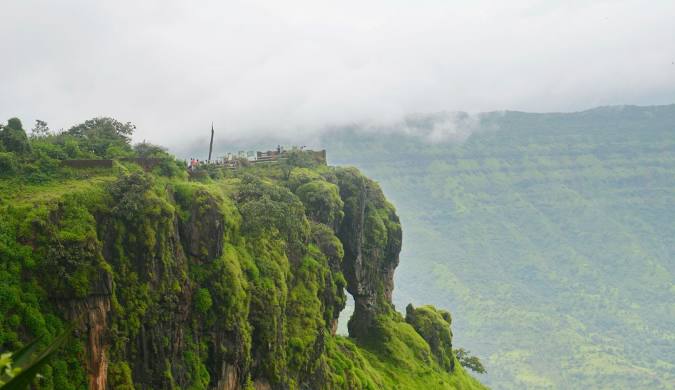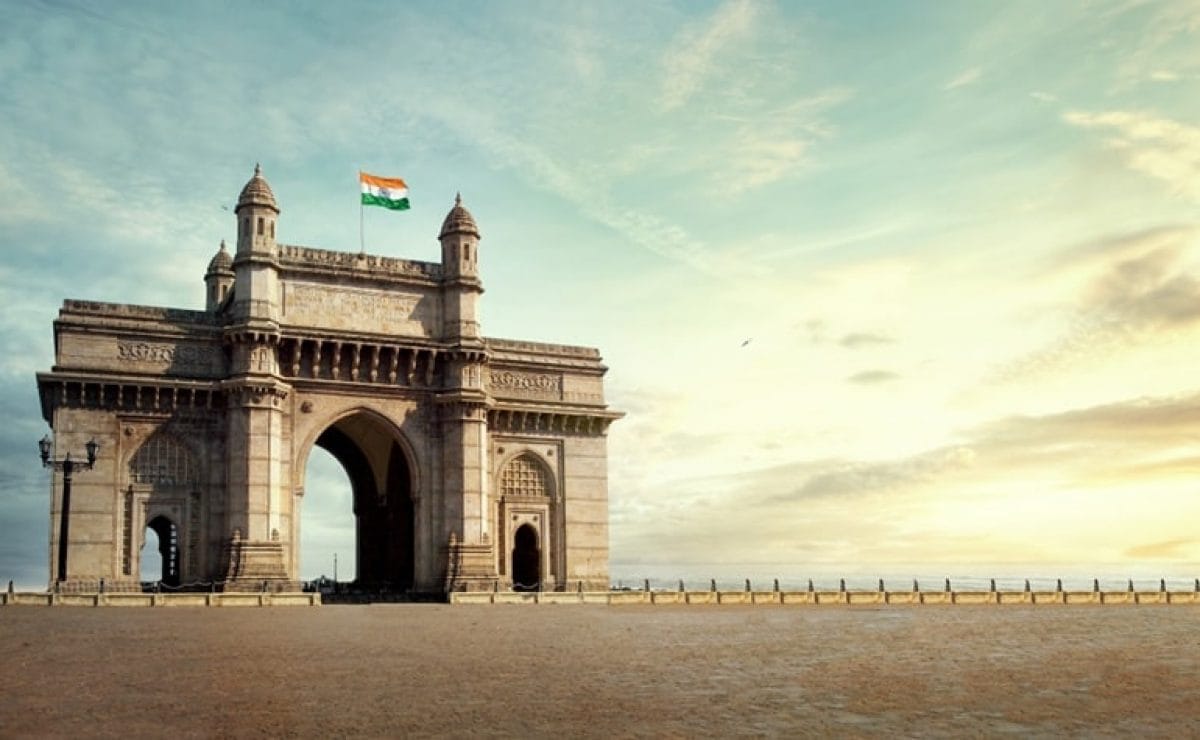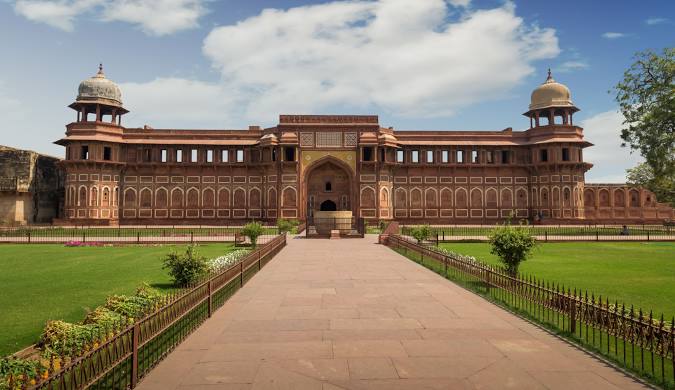
Introduction
Agra Fort, a UNESCO World Heritage site located in Agra, Uttar Pradesh, India, is an architectural marvel and a testament to the grandeur of the Mughal Empire. Known as the “Lal Qila” or “Red Fort of Agra” due to its red sandstone walls, Agra Fort has been a strategic and opulent stronghold for centuries. The Taj Mahal, located in Agra, is often paired with it and attracts millions of visitors annually as part of Agra’s historic landscape.
History
Mughal Emperor Akbar commissioned Agra Fort in 1565 and completed it in 1573. Originally built as a military fort, it later became a royal palace. The fort has witnessed numerous historical events, including the rule of Akbar and his descendants. Shah Jahan, Akbar’s grandson, transformed the fort into a luxurious palace, adding many stunning structures.
This site witnessed the rise and fall of emperors like Akbar, Jahangir, Shah Jahan, and Aurangzeb, and was at the center of various historic events. Aurangzeb imprisoned Shah Jahan in Agra Fort, but he continued to gaze at the Taj Mahal, which he had built, from his cell.
Architecture
The architectural brilliance of Agra Fort is evident in its design, combining elements of Islamic and Hindu styles. Built from red sandstone, Agra Fort features massive walls, intricate carvings, and beautiful gardens. A massive wall, 20 meters high, surrounds the fort and spans over 2.5 kilometers. Four gates, including the famous Amar Singh Gate, provide entry points to the fort. Key architectural highlights include:
- Jahangir Mahal: A stunning palace built for Akbar’s son, Jahangir, featuring beautiful courtyards and intricate carvings and offering stunning views of the Yamuna River.
- Khas Mahal: A luxurious palace with exquisite marble inlay work, used as a private residence by Shah Jahan.
- Diwan-i-Am (Hall of Public Audience): This grand hall was where the emperor addressed the public and dignitaries.
- Diwan-i-Khas (Hall of Private Audience): An opulent hall where private meetings were held, adorned with precious stones and intricate carvings.
- Moti Masjid (Pearl Mosque): A serene mosque made of white marble, exemplifying elegance and tranquility.
- Musamman Burj: Shah Jahan was held captive in an octagonal tower with a delicate design.
- Sheesh Mahal: The Mirror Palace, adorned with mirror mosaics and intricate marble carvings.

Visiting Agra Fort
Agra Fort is open to visitors throughout the year. It is easily accessible by road and rail, making it a popular destination for tourists. The best time to visit is during the cooler months from October to March. Guided tours are available, providing insights into the fort’s history and architectural significance.
- Hours: The fort is open daily from sunrise to sunset.
- Nearby Attractions: Located close to the Taj Mahal and Fatehpur Sikri, it is easy to combine a visit to Agra Fort with other iconic sites.
- Entry Fee: There is a nominal entry fee, and discounts are available for students and foreign tourists.
- Guided Tours: Opting for a guided tour can enhance your experience, providing detailed historical context and anecdotes.
- Accessibility: The fort is wheelchair accessible, with designated pathways for easier navigation.
Photography Tips
Agra Fort offers breathtaking views of the Taj Mahal, especially from the fort’s ramparts. Here are some photography tips:
- Golden Hour: Visit early in the morning or late afternoon for the best lighting.
- Angles: Explore different angles and perspectives to capture the intricate details of the fort’s architecture.
- Landscape Shots: Include the Taj Mahal in your shots for a stunning contrast against the fort’s red sandstone.
Nearby Attractions
When visiting Agra Fort, consider exploring these nearby attractions:
- Taj Mahal: The iconic symbol of love and a UNESCO World Heritage Site, located just 2.5 kilometers away.
- Itimad-ud-Daulah’s Tomb: This exquisite tomb, renowned as the “Baby Taj,” is known for its intricate inlay work.
- Mehtab Bagh: A beautiful garden that offers stunning views of the Taj Mahal, perfect for a peaceful stroll.
Conclusion
Agra Fort stands as a magnificent representation of India’s historical and architectural legacy. Whether you are a history enthusiast, architecture lover, or simply looking to explore India’s rich culture, a visit to Agra Fort is a must. Plan your trip to this remarkable site and immerse yourself in the splendor of Mughal history.


